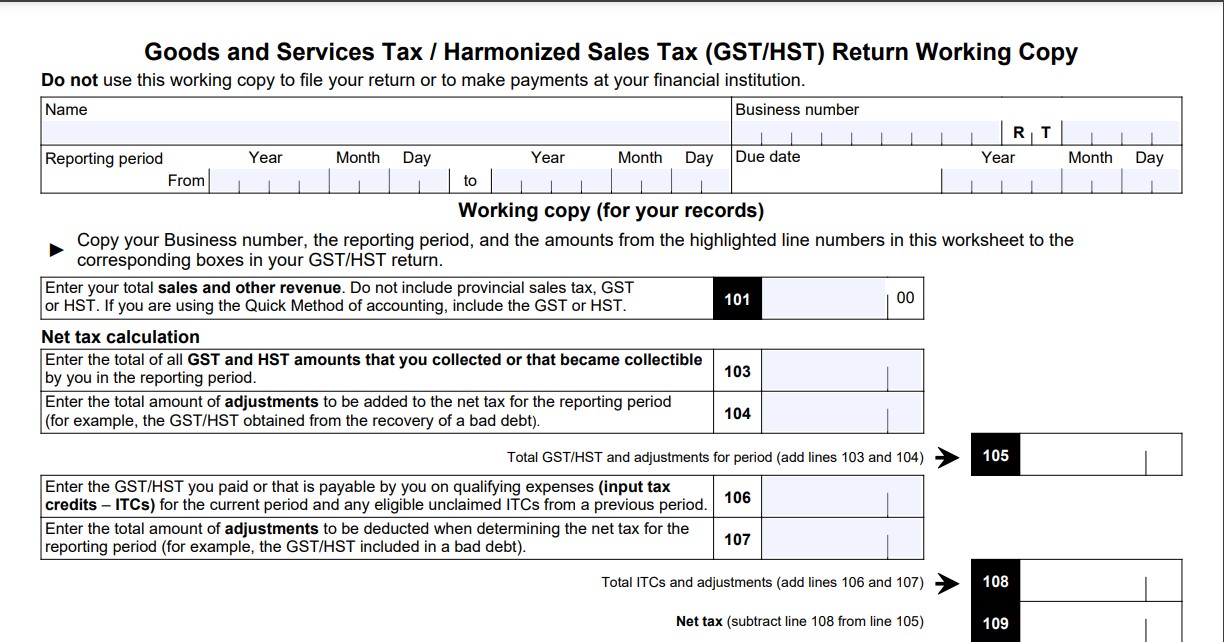Basics of GST HST Filing: How to Maximize Your GST/HST Refund
Simplifying GST/HST: Your Guide to Filing and Maximizing Refunds When it comes to GST HST filing, there are so many nitty-gritty details that it’s easy to feel overwhelmed. If you’re just approaching the subject—maybe as a new immigrant to Canada or someone starting a business—it might seem daunting. But hey, worry not, that’s exactly why we’re here! In this post, we’ll break down all the basics of GST/HST in a way that’s easy to understand. By the time you finish reading, you’ll feel way more confident in your ability to not only understand everything GST/HST-related but also take full advantage of the strategies to maximize your GST/HST refund. We’ll equip you with practical information and tactics to ensure you claim the maximum Input Tax Credits (ITCs) you’re eligible for. At the end of the day, we’re rooting for your financial prosperity and success—and this crash course is just one way we aim to help you achieve it! Let’s get started. What is GST/HST? Let’s keep it super simple: GST stands for Goods and Services Tax, and HST stands for Harmonized Sales Tax. These are taxes you pay when you buy things in Canada—kind of like a small extra fee added to the price of goods and services. Here’s how they work: If you run a business, you might need to charge GST or HST on the things you sell, collect it from your customers, and then send it to the government. But here’s the good part—you can also get some of that tax back through Input Tax Credits (ITCs) when you file your return. In short, GST/HST is just a way the government collects taxes on most things we buy or sell, but it’s not all bad because you can recover some of it if you’re a business owner! Provincial GST/HST Rates in Canada (Chart) Province/Territory GST HST Total Tax Rate Notes Alberta 5% N/A 5% GST only—no provincial sales tax. British Columbia 5% N/A 12% GST + 7% provincial sales tax (PST). Manitoba 5% N/A 12% GST + 7% provincial retail sales tax (RST). New Brunswick N/A 15% 15% HST applies—combined GST + PST. Newfoundland and Labrador N/A 15% 15% HST applies—combined GST + PST. Northwest Territories 5% N/A 5% GST only—no provincial sales tax. Nova Scotia N/A 15% 15% HST applies—combined GST + PST. Nunavut 5% N/A 5% GST only—no provincial sales tax. Ontario N/A 13% 13% HST applies—combined GST + PST. Prince Edward Island N/A 15% 15% HST applies—combined GST + PST. Quebec 5% N/A 14.975% GST + Quebec Sales Tax (QST) at 9.975%. Saskatchewan 5% N/A 11% GST + 6% provincial sales tax (PST). Yukon 5% N/A 5% GST only—no provincial sales tax. GST HST Rates by Province – Canada Who Pays GST/HST, and When Do You Need to Register for a GST/HST Number? Who Pays GST/HST? When Do You Need to Register for a GST/HST Number? Here’s when you must register for a GST/HST account: How to Check If You Need to Register Ask yourself these quick questions: If you answer “yes” to any of these, it’s time to get your GST/HST number. When Should You Apply for a GST/HST Number? How to Register Do All Products and Services Have the Same GST/HST Rate? This is another key principle you need to understand to truly master GST/HST—not all products and services are taxed the same. In fact, there are different categories of taxable items, and knowing the difference is crucial for your business. Let’s break this down: 1. Exempt Products and Services Some products and services are exempt from GST/HST altogether. This means no GST/HST is charged on them, and you don’t need to collect or remit anything to the government. Examples include: With exempt items, you can’t claim Input Tax Credits (ITCs) on any GST/HST paid for related business expenses. 2. Zero-Rated Products and Services Some products are zero-rated, which means they are still subject to GST/HST, but at a rate of 0%. You won’t collect any GST/HST from your customers on these items, but you can claim ITCs on any GST/HST you pay for related business expenses. Examples of zero-rated products include: Zero-rated items are like a special case—they don’t cost consumers any extra tax, but they still allow businesses to claim refunds for GST/HST paid on purchases related to these goods. 3. The Business Use Rule for ITCs It’s important to note that to claim any Input Tax Credits (ITCs) on HST paid for business expenses, those expenses must be for business use only. Personal use expenses won’t qualify. For example, if you buy a laptop for personal use, you cannot claim ITCs for it even if you are a business. Understanding the different categories and their implications will give you the tools to navigate GST/HST effectively, ensuring you’re paying the right amount of tax and maximizing your potential refunds. Home Office Expenses and HST: How to Claim ITCs When you run a business from home, you may be able to claim a portion of the HST paid on your home office expenses. This is a great way to reduce your tax burden, but to qualify, you’ll need to follow a few steps and understand the rules clearly. Determining Your Home Office Percentage To claim Input Tax Credits (ITCs) on home office expenses, you must first determine what percentage of your home is dedicated to business use. This is typically calculated based on the square footage of your home office in relation to the total square footage of your home. For example: Claiming ITCs on Home Office Expenses Once you know the percentage of your home that is used for business, you can claim that percentage of the HST paid on eligible home office expenses as Input Tax Credits (ITCs). These expenses might include: For example: Important Things to Keep in Mind Understanding how to calculate and claim ITCs for home office expenses can provide significant tax savings for business owners who work from home. With this knowledge, you can maximize
Basics of GST HST Filing: How to Maximize Your GST/HST Refund Read More »






